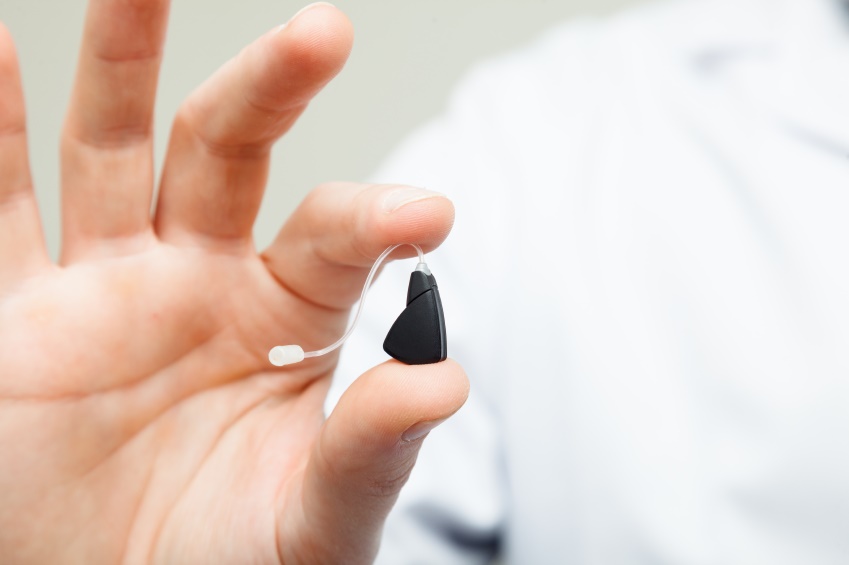Hearing aid guides are not uncommon, but the majority are not exactly reader-friendly, either. Many are generally too long or complex, resulting in more confusion instead of less.
My guess is that you’re less interested in the physiology of hearing or in the particulars of acoustical engineering and a lot more interested in obtaining the most suitable technology at a reasonable price. Your intent is to hear better, not to read a 15-page manual.
If that describes you, then you’ll enjoy this brief guide to hearing aids. We’ll cover four brief sections, and when we’re done, you’ll be prepared to work with your hearing care professional to discover the technology that’s best for you. Let’s get started.
How All Digital Hearing Aids Work
Choosing a hearing aid can feel overwhelming—there are a number of brands and seemingly never-ending factors to consider. But it’s really not as complex as it appears. As you move forward through this guide, keep in mind that all digital hearing aids function basically the same way, and consist of these four basic parts:
- The microphone picks up external sound and directs it to the digital processor.
- The digital processor modifies the sound signal according to the settings programmed by the hearing specialist. The modified sound signal is then delivered to the amplifier.
- The amplifier increases the volume of the sound according to the programmed settings, amplifying only the frequencies the person has trouble hearing (while suppressing background noise). This signal is then sent to the speaker.
- The speaker supplies the enhanced sound to the ear, producing louder, clearer sound.
In addition, all hearing aids contain a battery, volume and setting buttons, and remote controls.
Hearing aids really only differ in two major ways: 1) style, and 2) advanced features. We’ll cover these in the next two sections.
Hearing Aid Styles
You have your choice of three main styles:
1. Behind-the-ear (BTE) hearing aids hook over the top of the ear and rest behind the ear. The case is then linked to an earmold in the ear canal by a piece of clear tubing. BTE hearing aids are convenient to handle and maintain, generally have an extended battery life, and can manage severe hearing loss.
2. In-the-ear (ITE) hearing aids occupy the outer part of the ear with a custom-molded shell. ITE hearing aids are smaller than the behind-the-ear hearing aids but larger than the in-the-canal styles. This makes ITE hearing aids easier to handle than the smaller styles but less conspicuous than the BTE style.
3. In-the-canal (ITC) hearing aids and completely-in-the-canal (CIC) hearing aids fit partly or completely inside of the ear canal, making them almost or completely invisible. ITC and CIC hearing aids are custom molded to the curves of the ear, and some types can be worn for months at a time.
When choosing a style, think about the tradeoffs among simplicity of use, battery life, and concealment. Your hearing care expert will help you prioritize your preferences and pick the best suited style.
Hearing Aid Advanced Features and Accessories
Once you’ve decided on the right style, you can identify which of the following advanced features you need—and which you don’t.
- Directional microphones allow you to concentrate on the sounds and conversations directly in front of you while reducing the interruption of loud background noise.
- Telecoils, or T-coils, allow you to talk on the phone while reducing the static induced by by background noise.
- Environmental noise control allows you to optimize hearing based upon your environment, for example in a tranquil room at home versus in a hectic restaurant.
- Direct input to sound sources such as TVs, radios, computers, and music players allow for clear sound without background noise.
- Wireless connection to mobile phones transforms your hearing aids into top-notch wireless headsets. The hearing aid settings can be controlled from the phone (or digital watch), and sound can be wirelessly streamed directly from the phone to the hearing aids.
Optional accessories include cleaning kits, storage cases, ultraviolet sanitizers, battery-changers, and more. Your hearing care professional can help you determine which you may need or want.
Choosing the Right Hearing Aids
Before investing in hearing aids, take these four steps:
- Find a reputable, local hearing care professional. Only professionals with ample experience can assess your hearing properly, which is crucial for when it comes time to program, fit, and fine-tune your hearing aids.
- Discuss hearing aid styles and advanced features. Your selection of hearing aids will hinge on your preference of style and function. Discuss these two factors with your hearing expert and your options will become manageable.
- Set a budget. Some would assert that your hearing is priceless, but that doesn’t mean you have an unlimited budget. With all of the hearing aid options available to you, you and your hearing professional can find the right hearing aid at a reasonable price.
- Try out your new hearing aids. inquire about trial periods and test out your new hearing aids. Talk with your hearing specialist to set sensible expectations and give your hearing aids an opportunity to work. Your patience will be paid back when you recognize the difference better hearing will make in your life.
And that’s it. What appears to be a complex process is in truth easily manageable, once you understand how to prioritize your needs and limit your choices. With the assistance of your local hearing care professional, you can find the most suitable technology at the right price—so you can start taking pleasure in all of the perks of better hearing.

